Musings
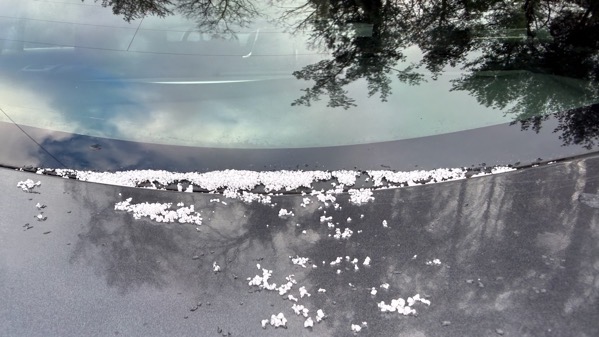
Snow granules. Indeed, we found snow in Asheville, not enough to be visible anywhere but odd spots like cracks on our car’s body.
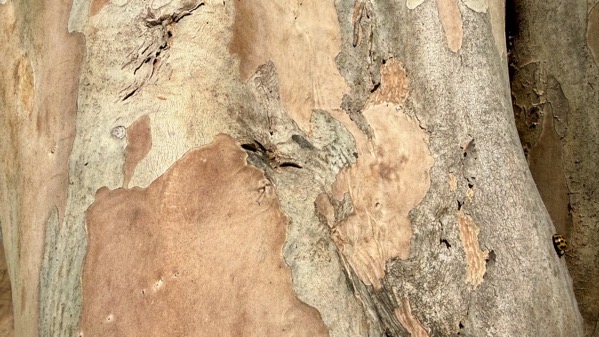
We fitted in one more loved-ones stop in SC, and zoomed home, negotiating one last Atlanta traffic slow-down en route.
So glad we went. Turns out that we managed to find the best weather window that there was, although we didn’t know it at the time.
Posted at 8:06 PM |
No Comments »
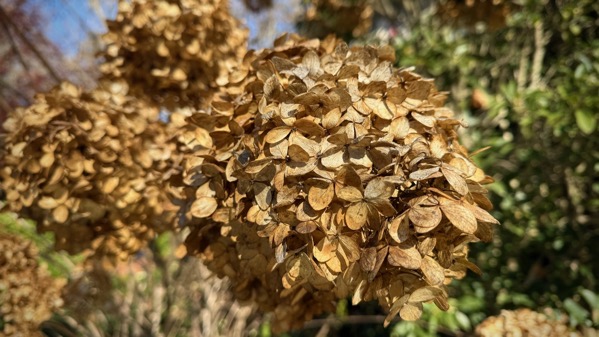
Desiccated, brittle, and achromatic can be beautiful.
Posted at 7:14 PM |
No Comments »
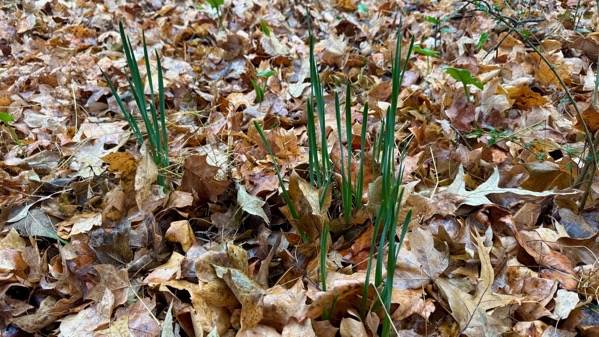
Here it is almost Thanksgiving, and our bulbs are “springing” forth.
Posted at 6:21 PM |
2 Comments »
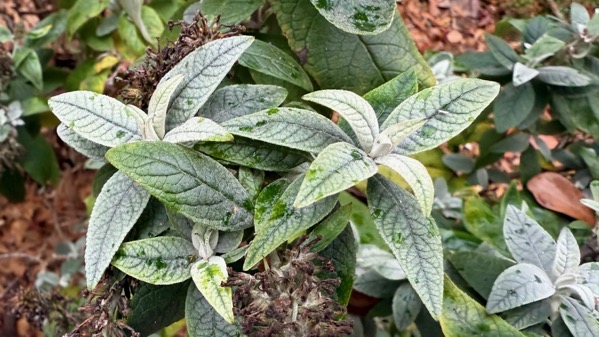
We watched two movies, you know the long-form presentations not serial shorties, back to back (pretty much) late this afternoon and into the evening. I think it threw my pacing off and I almost forgot to create a post.
Posted at 9:40 PM |
No Comments »
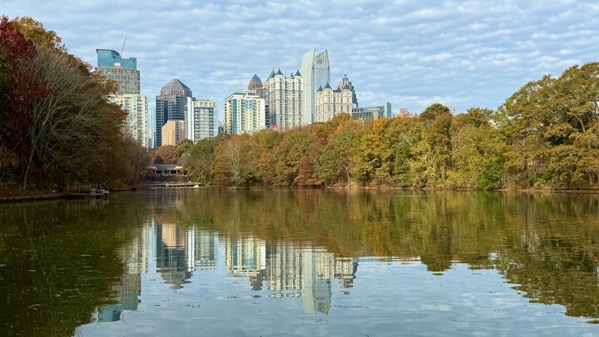
I stretched my legs in the big park this morning, and Lake Clara Meer was a fine reflector. Note the brown shades that are typical of the leaves of Atlanta’s oak-dominant canopy trees.
Posted at 7:15 PM |
No Comments »
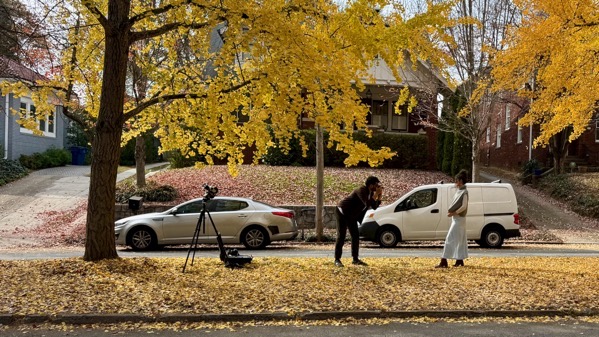
Act One: young man photographing young woman. Aww.
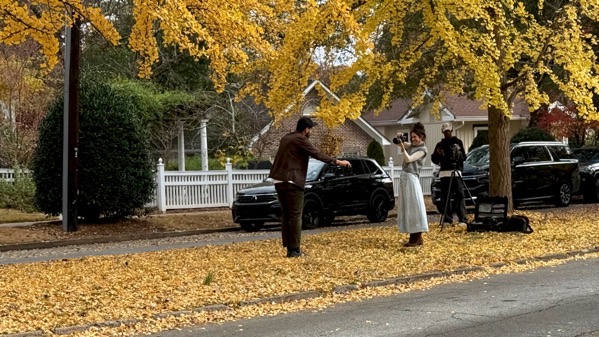
A half-hour later…unexpected Act Two: switcheroo!—young woman photographing young man, with considerably more posing instruction.
And a mystery man at the tripod. BTW, what’s the tripod for in this play? And that second man? Or maybe there’re plans for a movie, too? Questions abound.
Note that although there are many ginkgo leaves on the ground, there are even more on the trees.
Posted at 5:59 PM |
No Comments »
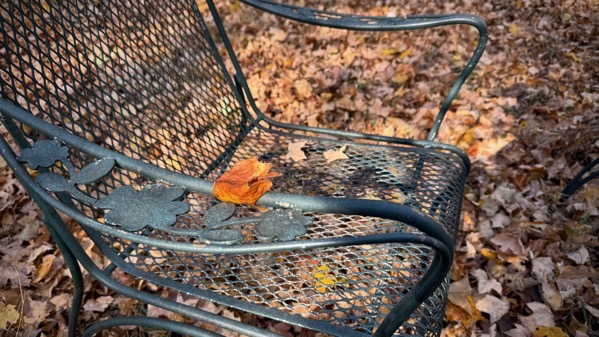
Proof that gravity didn’t get shut down along with the Federal government.
Posted at 8:23 PM |
No Comments »

We uncharacteristically ventured out this evening and took in a friend’s opening. We thought this flower arrangement was appropriate for paintings categorized as surrealism.
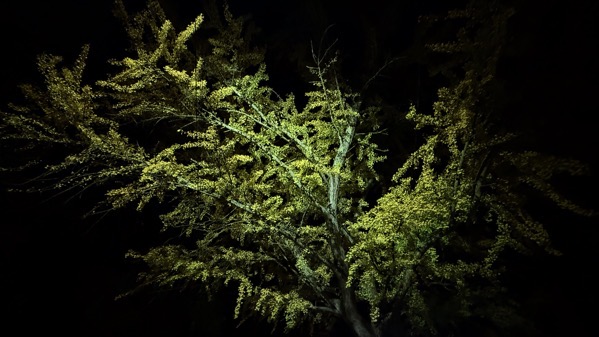
On the way home, I snapped this, proof that the pair of ginkgos up the street still have most of their leaves.
Posted at 9:31 PM |
No Comments »
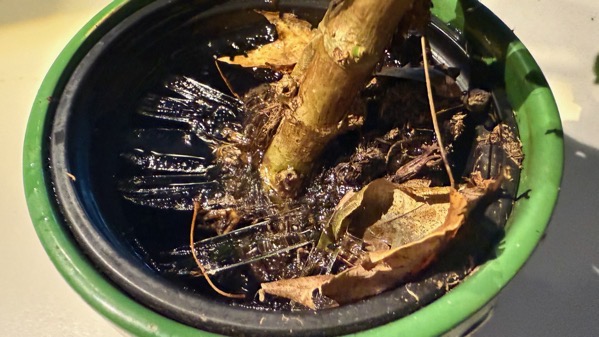
Ooops. Forgot this poor plant gifted to me months ago. It’s been on its own mostly since. It’s inside now.
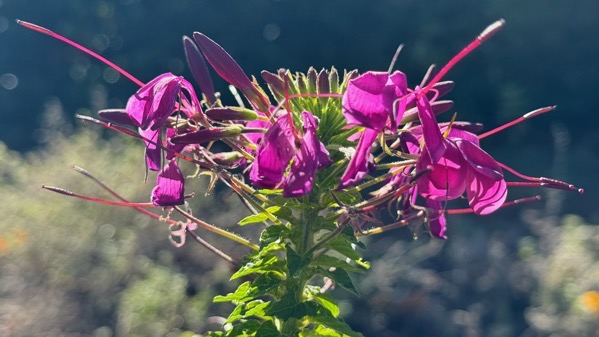
This one, on the other hand, is right out in the midst of the Snap, surviving nicely (so far).
Posted at 6:56 PM |
Comments Off on Snap
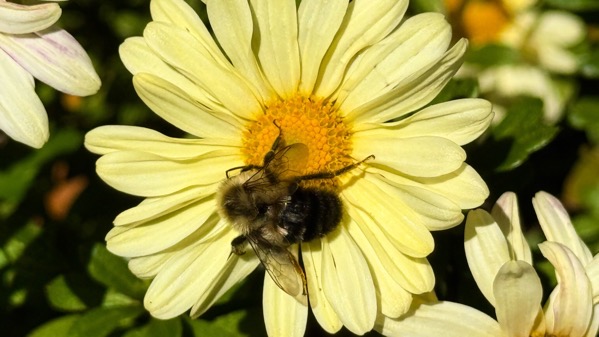
Such a sunny afternoon!…perfect for a slightly longer walk than normal.
Posted at 7:19 PM |
Comments Off on Fly in a bee costume?













